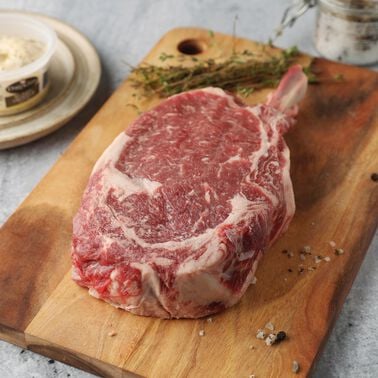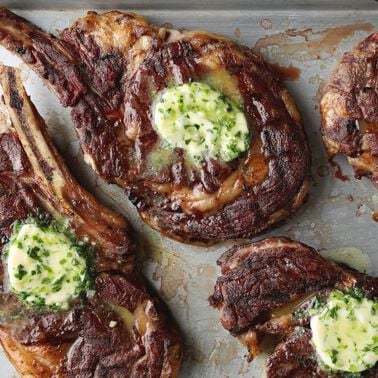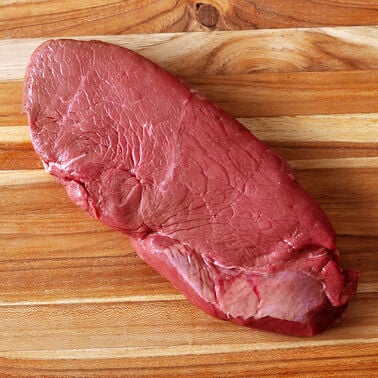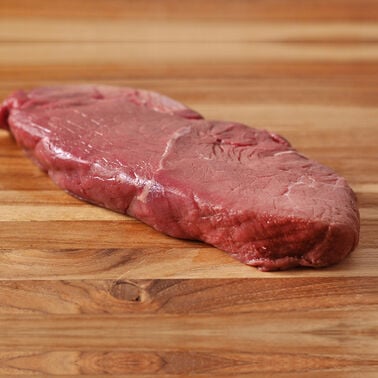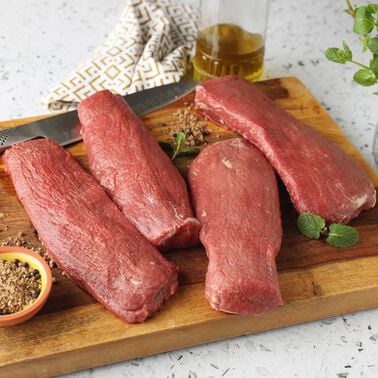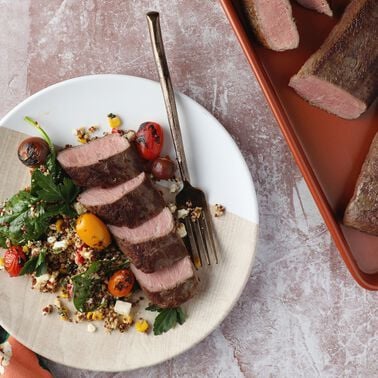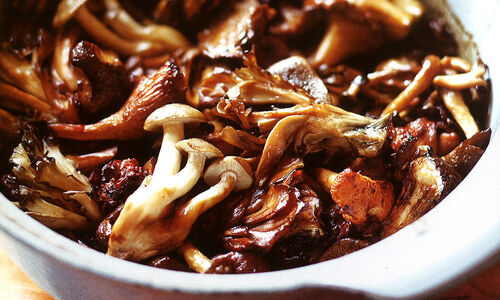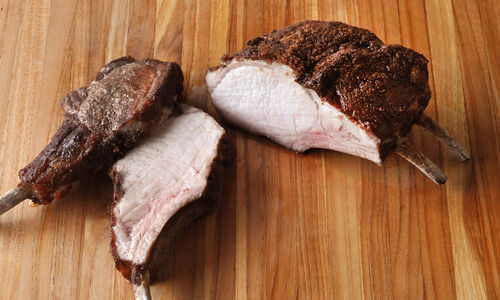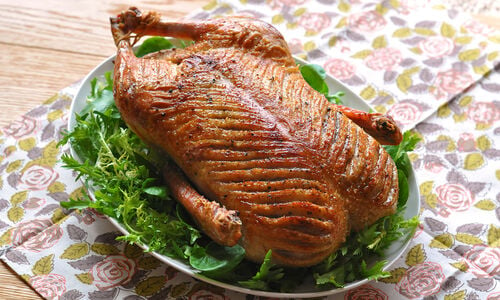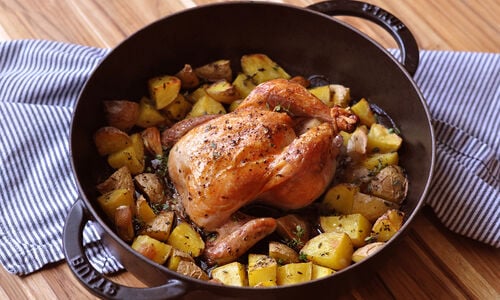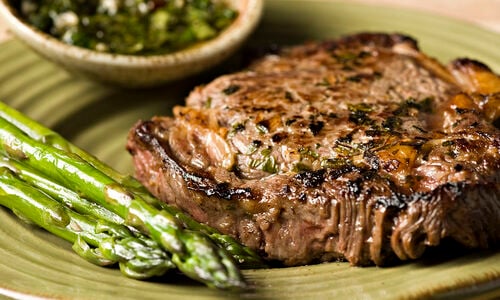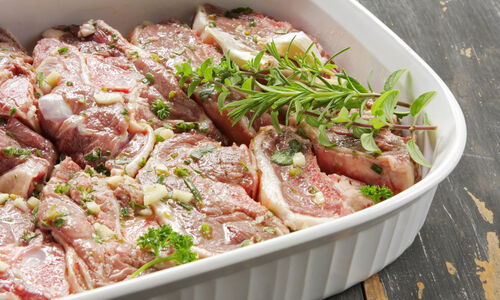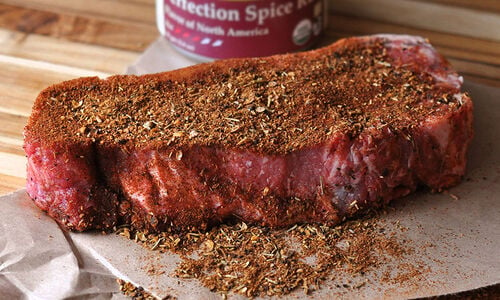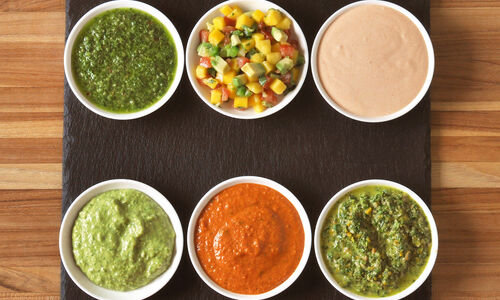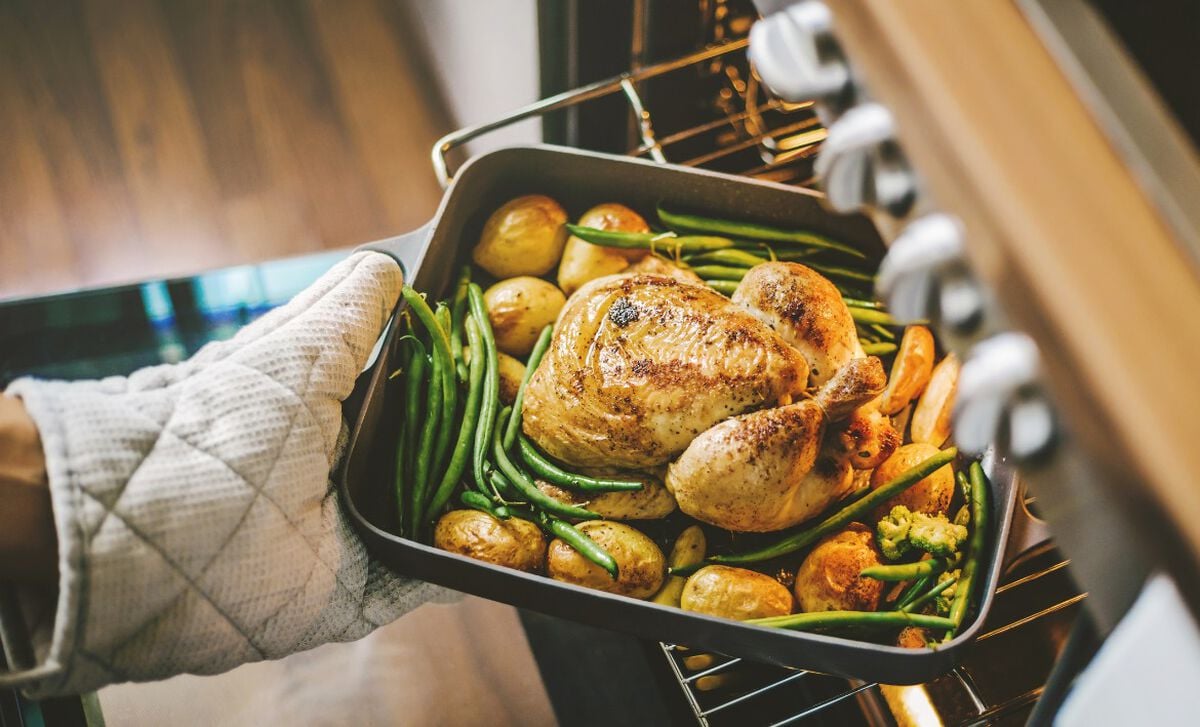
Equipment
While not required, a broiling pan (your oven probably came with one!) or a wire rack set over a lipped sheet pan is ideal because like grilling, when you broil you want the fat to drip away from the meat allowing for efficient browning. Lining the bottom of the pan with aluminum foil will help to catch drippings and allow for fast cleanup. Since when you broil you're only heating one side of the meat at a time, you’ll also need tongs or a spatula to gently flip your food.
Hot Hot Heat
Broiling in a standard oven, whether gas or electric, takes place at a temperature between 400 to 550 degrees F. You should always preheat your broiler and your broiler pan for at least five minutes before cooking. Some people swear by keeping the oven door slightly ajar to prevent fat-induced flare-ups and to keep the thermostat from reaching maximum temperature, which may trigger the broiler to turn off in some models. Broiling generally takes place with the oven rack in the top two positions. A good rule of thumb is: the thinner the cut, the closer the flame, and vice versa. For example, for cuts less than 1 ½ inches thick, broil 3-4 inches away from the heating element. For cuts over 1 ½ inches thick, 4-5 inches away works well. Thin cuts need a chance to brown before being over-cooked and thick cuts should reach the proper temperature in the center before burning.
Keep An Eye On It!
Since broiling uses intense direct heat you should always keep a watchful eye over meat to prevent burning. If you're following a recipe that calls for broiling, always check the doneness a few minutes before the recipe calls for it since temperatures vary from oven to oven. Be mindful of flare-ups - you should trim excess fat from meat before broiling and stay away from oily marinades. Spice rubs are a great alternative. You may also experience some smoke while broiling as fat hits the heating element so use your exhaust fan.
Quick Tips
- Meat should be brought close to room temperature before broiling.
- Broiling is a great method if you’re trying to cut down on added fat because the meat is heated from the top so you don’t need to oil to the pan to prevent sticking.
- The broiler is also wonderful for browning the top of dishes like gratins or casseroles, quickly melting cheese on the top of a burger or adding some color and crispness to oven-roasted poultry.
- In the UK, "grilling" actually refers to broiling, whereas in America, grilling refers to cooking on a grate over flame.
- If you’re basting your meat while broiling, make sure you warm the liquid so you don’t bring the temperature down.
